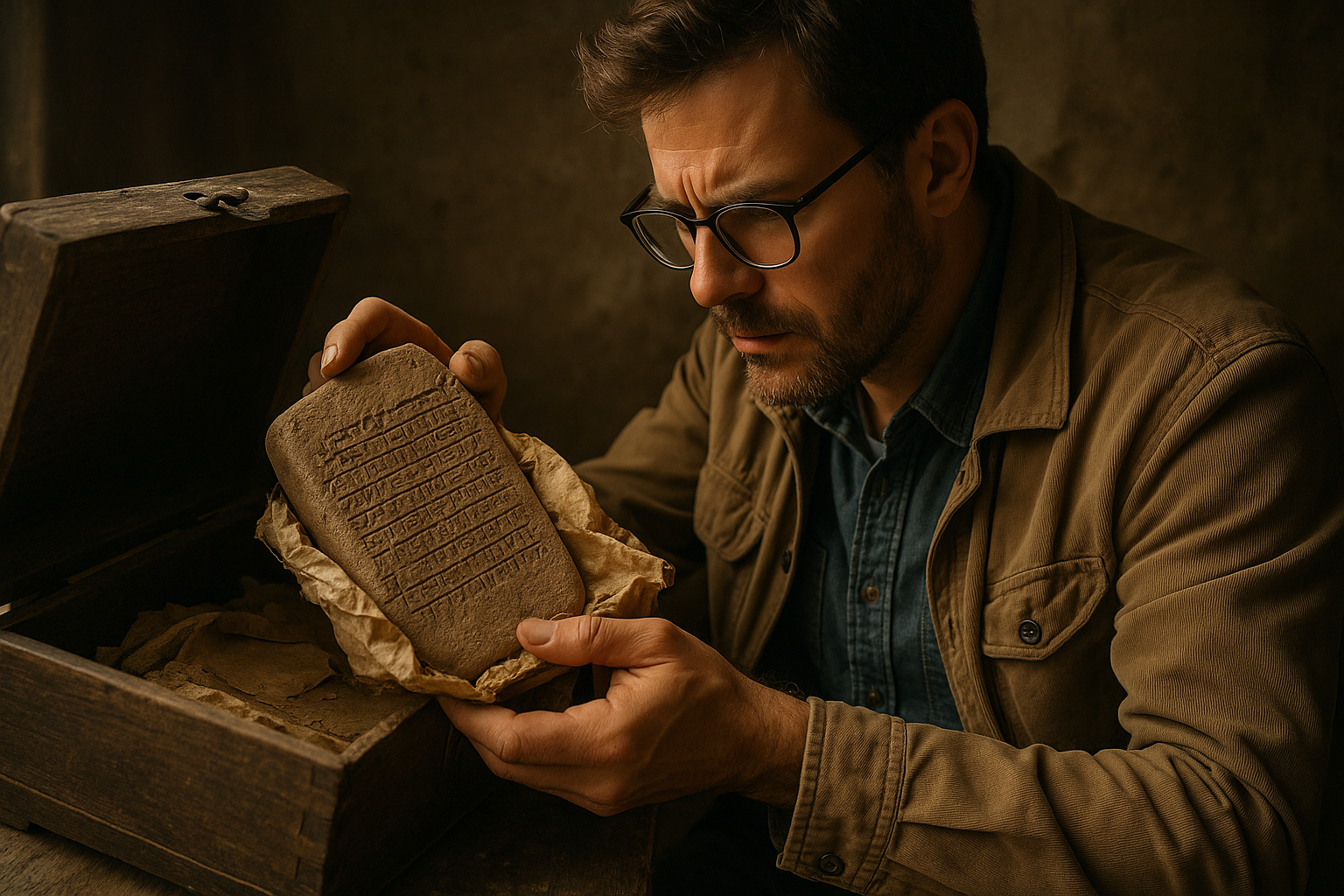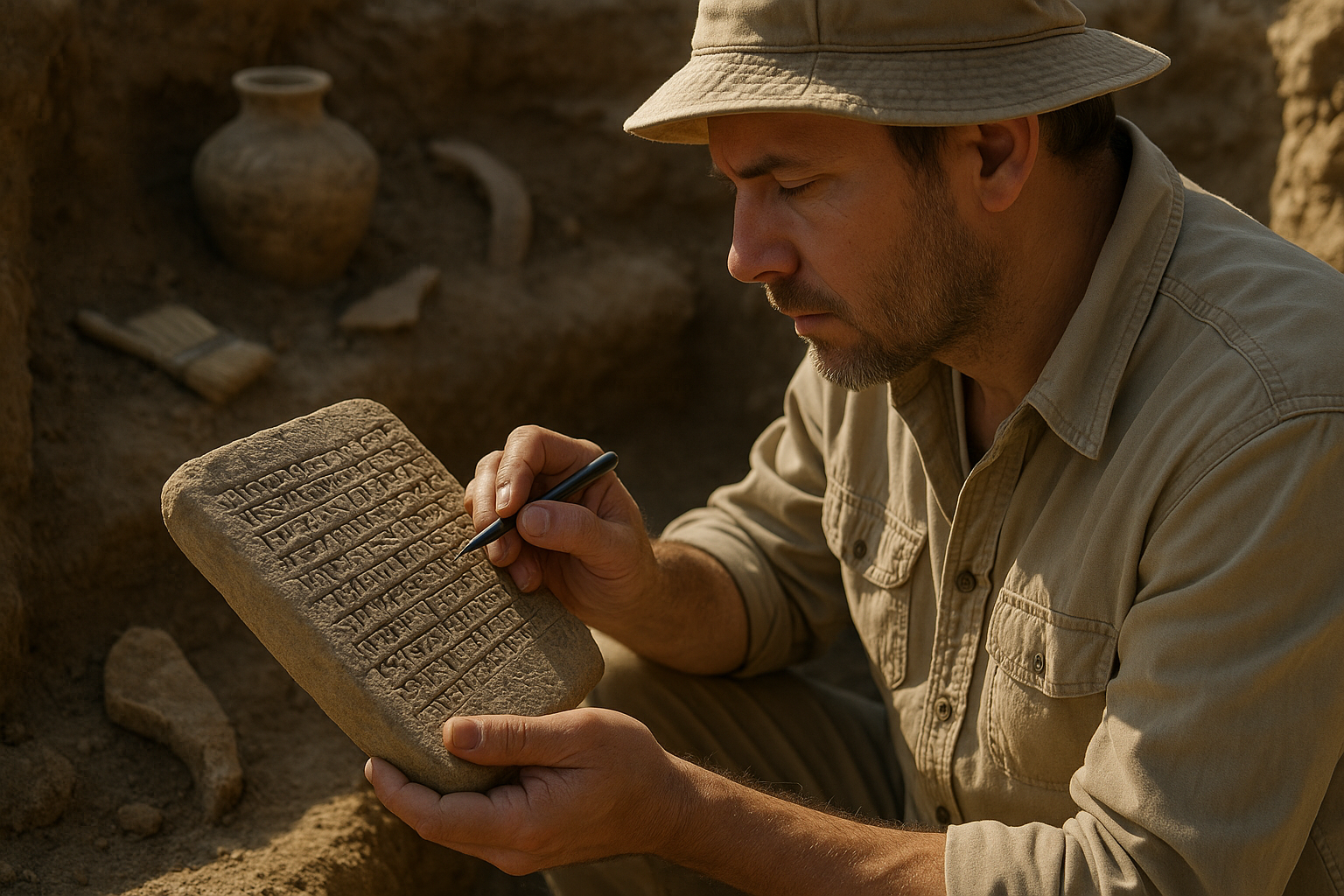Ancient burial sites across the globe hold more than human remains—they preserve sacred texts, ritual inscriptions, and coded messages that unlock forgotten spiritual practices and belief systems.
🏺 Whispers from the Grave: When Burial Becomes Archive
For millennia, humanity has entrusted its most precious knowledge to the earth alongside the departed. From Egyptian tombs lined with hieroglyphic spells to Viking graves containing runic inscriptions, burial contexts have served as time capsules for ritual writings that might otherwise have vanished from history. These texts weren’t mere decorations or afterthoughts—they represented vital spiritual technologies designed to guide souls, protect the deceased, and transmit sacred knowledge across generations.
The practice of burying ritual texts emerged from a profound understanding that death was not an ending but a transformation requiring precise instructions. Ancient cultures recognized that the transition between worlds demanded specialized knowledge, encoded in carefully crafted symbols and words. By placing these writings in burial contexts, communities ensured their most important spiritual codes would endure, protected by the sanctity of death itself.
Archaeological discoveries continue to reveal the sophistication of these preservation strategies. Texts inscribed on bone, etched into metal amulets, painted on coffin interiors, or written on perishable materials like papyrus and silk demonstrate the lengths ancient peoples went to safeguard ritual knowledge. Each discovery offers modern scholars a glimpse into cosmologies, magical practices, and religious beliefs that shaped entire civilizations.
📜 The Egyptian Book of the Dead: Blueprint for Eternity
Perhaps no ritual text exemplifies burial preservation better than the Egyptian Book of the Dead. This collection of spells, prayers, and instructions wasn’t a single unified book but rather a customizable compilation that evolved over centuries. Wealthy Egyptians commissioned personalized versions to be placed in their tombs, creating a guidebook for navigating the dangerous journey through the underworld.
The spells contained within these papyrus scrolls addressed specific challenges the deceased would face: transforming into various creatures, appeasing hostile deities, and most famously, surviving the Weighing of the Heart ceremony before Osiris. The texts combined practical navigation instructions with philosophical declarations of worthiness, creating a comprehensive spiritual GPS system for the afterlife.
What makes these funerary texts particularly fascinating is their democratic evolution. Initially reserved for pharaohs during the Old Kingdom as the Pyramid Texts, these ritual writings gradually became accessible to nobles and eventually to anyone who could afford a copy. This democratization of sacred knowledge represents a remarkable shift in religious practice, suggesting that access to spiritual codes became increasingly viewed as a universal right rather than royal privilege.
Decoding the Spells: Structure and Purpose
Egyptian funerary texts followed specific structural patterns that reveal their ritual function. Many spells began with title phrases identifying their purpose: “Spell for not dying again” or “Spell for opening the mouth.” These titles weren’t merely descriptive—they functioned as activation phrases, verbal keys that unlocked the spell’s power when recited correctly.
The accompanying illustrations, called vignettes, weren’t decorative additions but integral components of the magical formula. Images of the deceased performing rituals, confronting demons, or standing before divine judges activated visual pathways of spiritual power. Text and image formed a unified magical technology, neither complete without the other.
🗿 Beyond Egypt: Global Traditions of Buried Ritual Texts
While Egyptian funerary literature dominates popular imagination, similar practices flourished across ancient cultures. In China, jade burial suits were inscribed with protective texts, while tomb walls featured detailed instructions for navigating the afterlife bureaucracy. The Chinese understanding of death as an administrative transition required proper documentation—literally providing the deceased with passports, permits, and identification papers for the spirit world.
Mesopotamian graves yielded cylinder seals and clay tablets inscribed with incantations designed to protect the deceased from demons and ghosts. These texts reveal a cosmology where the afterlife was a dreary, dusty realm requiring magical protection rather than moral judgment. The ritual writings emphasized appeasing angry spirits and maintaining proper boundaries between the living and the dead.
In pre-Columbian Americas, burial chambers contained codices and inscribed artifacts detailing creation myths, astronomical calculations, and ritual procedures. The Maya buried their elite with ceramic vessels inscribed with dedication texts and mythological scenes, transforming everyday objects into vessels of sacred narrative. These writings connected individual deaths to cosmic cycles, positioning each burial as a reenactment of divine deaths and rebirths.
The Viking Runestones: Public Memory, Private Magic
Scandinavian burial practices included both public monuments and hidden inscriptions. While large runestones announced deaths and commemorated achievements, smaller runic charms placed within graves served protective and magical functions. These texts sometimes contained coded messages accessible only to those initiated in runic mysteries, creating layers of public and esoteric meaning.
The practice of carving runes on weapons, jewelry, and bones before burial suggests these objects were being “activated” for use in other realms. Inscriptions like “I consecrate these runes” or invocations of Norse gods transformed mundane items into spiritual tools, demonstrating how ritual writing could bridge material and immaterial worlds.
🔍 Archaeological Methods: Recovering Fragile Knowledge
Extracting ritual texts from burial contexts presents enormous challenges. Organic materials like papyrus, silk, and wood deteriorate rapidly, often surviving only in exceptional preservation conditions—extreme dryness, waterlogging, or mineral replacement. Archaeologists have developed specialized techniques to recover these fragile writings, from multispectral imaging that reveals faded ink to chemical stabilization processes that prevent further degradation.
Recent technological advances have revolutionized the field. X-ray fluorescence imaging can detect metallic inks invisible to the naked eye, while computed tomography allows researchers to virtually “unwrap” sealed scrolls too fragile to open physically. These non-invasive methods have revealed texts previously considered lost forever, including carbonized scrolls from Herculaneum and sealed Egyptian mummy cartonnage.
The context of discovery matters as much as the texts themselves. Archaeologists meticulously document the position of each artifact, noting which texts lay near the head, feet, or hands of the deceased. These placements weren’t random but followed ritual prescriptions that reflected specific beliefs about bodily resurrection, spiritual protection, or soul navigation.
💀 The Language of Death: Linguistic Features of Funerary Texts
Ritual writings preserved through burial often employ specialized linguistic registers distinct from everyday speech. Egyptian funerary texts used archaic grammatical forms and vocabulary that would have seemed antiquated even to ancient readers, lending the spells authority through temporal distance. This sacred language created a sense of accessing primordial wisdom from the gods themselves.
Many burial texts feature repetitive structures, parallelism, and formulaic phrases that facilitated memorization and oral transmission. Before being written down, these texts likely circulated orally among priests and ritual specialists. The written versions served as authoritative references rather than scripts to be read aloud, anchoring fluid oral traditions in fixed textual forms.
The use of first-person declarations in many funerary texts deserves particular attention. Phrases like “I am Osiris” or “I know the names of the gatekeepers” weren’t metaphorical but transformative speech acts. By speaking these words, the deceased literally became what they declared, using language as magical technology to reshape reality and identity.
Secret Names and Hidden Meanings
Many ritual texts incorporate cryptographic elements—secret names of deities, reversed writing, or symbolic substitutions that concealed meanings from the uninitiated. Egyptian texts sometimes wrote divine names incompletely or replaced them with epithets, protecting sacred knowledge from profane eyes while still providing it to the worthy deceased.
This encoding served multiple functions: it prevented the misuse of powerful names by the living, it tested the spiritual knowledge of the deceased, and it maintained priestly authority over esoteric interpretation. The texts operated on multiple levels simultaneously, offering surface meanings accessible to all while hiding deeper significance for the initiated.
⚰️ Material Matters: The Physics of Preservation
The survival of ritual texts through burial depended heavily on material choices. Stone inscriptions endured virtually forever but required significant resources and skill to produce. Precious metals resisted corrosion while proclaiming the status of the deceased. More perishable materials like papyrus, leather, or textiles required specific environmental conditions to survive—conditions that ancient peoples sometimes artificially created.
Egyptian embalmers occasionally placed papyri within the wrappings of mummies or in sealed containers, protecting texts from moisture and insects. Chinese tombs were sometimes designed with drainage systems and sealed with layers of charcoal and clay to create stable microclimates. These engineering efforts demonstrate that preservation was intentional, not accidental—ancient peoples understood decomposition processes and took measures to counteract them.
The choice of writing medium itself conveyed meaning. Gold sheets inscribed with Orphic hymns found in Greek burials represented imperishable spiritual truths, while bone inscriptions connected textual knowledge to bodily resurrection. The medium wasn’t merely a neutral carrier but an integral part of the message, embodying beliefs about permanence, transformation, and spiritual power.
🌍 Comparative Patterns: Universal Themes in Ritual Burial Texts
Despite vast cultural differences, burial texts worldwide share remarkable thematic similarities. Nearly all emphasize transition narratives—crossing rivers, passing through gates, or climbing mountains. These journey metaphors reflect universal human experiences of death as movement from one state to another, requiring navigation skills and knowledge to complete successfully.
Protection against hostile forces appears consistently across traditions. Whether Egyptian demons, Mesopotamian ghosts, or Christian devils, burial texts arm the deceased with defensive knowledge: names to speak, gestures to make, or prayers to recite. This suggests death was widely understood as potentially dangerous, requiring spiritual armor and weapons.
Identity transformation represents another common theme. Texts frequently declare the deceased’s identification with gods, heroes, or cosmic forces, suggesting death offered opportunities for apotheosis or elevation beyond ordinary human status. These declarations weren’t wishful thinking but performative utterances that enacted the transformations they described.
🔮 Modern Implications: What Ancient Death Codes Teach Us
The study of ritual burial texts offers contemporary society more than historical curiosity. These writings reveal sophisticated psychological understandings of mortality anxiety and coping mechanisms. The detailed afterlife geographies and bureaucracies found in many traditions provided cognitive frameworks that made death comprehensible and manageable, transforming existential terror into navigable challenges.
The democratization of funerary texts over time mirrors modern debates about access to knowledge and spiritual authority. The Egyptian trajectory from exclusive royal texts to commercially available papyri parallels contemporary tensions between specialized expertise and universal access to information. These ancient precedents suggest that pressures toward knowledge democratization have deep historical roots.
The encoding and protection of sacred knowledge in burial contexts also speaks to contemporary concerns about information preservation and transmission. Ancient peoples faced the challenge of maintaining vital cultural knowledge across generations without modern technology, developing sophisticated strategies that combined redundancy, material durability, and restricted access to ensure essential information survived.
📚 Ongoing Discoveries: The Future of Funerary Text Research
New burial sites continue yielding previously unknown texts, regularly revising scholarly understanding of ancient religions and ritual practices. Recent discoveries in China, Peru, and Egypt have revealed texts that challenge existing interpretations and open new research directions. Each find demonstrates how much remains unknown about ancient burial practices and the ritual writings they preserved.
Emerging technologies promise to accelerate discovery rates. Machine learning algorithms can now identify patterns in fragmentary texts, reconstructing damaged passages with increasing accuracy. DNA analysis of organic writing materials reveals information about manufacture dates and geographical origins. These tools transform archaeological methodology, enabling questions that were previously unanswerable.
The ethical dimensions of studying burial texts deserve ongoing attention. These writings were often intended for specific individuals in specific contexts, raising questions about whether modern interpretation constitutes a form of violation. Indigenous communities increasingly assert rights over ancestral remains and associated texts, challenging traditional archaeological assumptions about universal scholarly access to the past.

🌟 The Enduring Power of Written Words in Darkness
The ancient practice of burying ritual texts speaks to a profound faith in the power of written language. These cultures believed words possessed inherent force—that correctly inscribed phrases could literally reshape reality, guide souls, and bridge the gap between mortal and divine realms. By committing these words to the grave, they bet on language’s ability to transcend death itself.
Modern readers might view these texts as quaint superstitions, yet they demonstrate sophisticated understandings of how symbols shape consciousness and culture. The ritual writings preserved through burial functioned as cultural DNA, encoding essential information in durable forms that could survive catastrophes, migrations, and the rise and fall of entire civilizations.
As we face our own questions about knowledge preservation in digital ages, these ancient strategies offer unexpected insights. The ancients understood that truly important information required multiple preservation strategies, physical redundancy, and sacred protection. Their solutions—stone, metal, careful encoding, and burial in protected contexts—succeeded in transmitting knowledge across thousands of years. Our challenge is developing digital equivalents that prove equally durable.
The ancient codes unveiled through burial archaeology continue revealing the remarkable sophistication of pre-modern spiritual thought. These texts weren’t primitive attempts to understand death but carefully crafted technologies designed to navigate it, transforming the ultimate human unknown into mapped territory with guidebooks, protective spells, and detailed instructions for the journey ahead.
Toni Santos is a temporal researcher and symbolic archaeologist specializing in the study of forgotten burial systems, sacred archival practices, and the visual languages embedded in ancient temporal lore. Through an interdisciplinary and artifact-focused lens, Toni investigates how humanity has encoded knowledge, memory, and mystery into the temporal world — across cultures, rituals, and vanished civilizations. His work is grounded in a fascination with time capsules not only as vessels, but as carriers of hidden meaning. From extinct burial ritual practices to mythical codices and secret temporal seals, Toni uncovers the visual and symbolic tools through which cultures preserved their relationship with the temporal unknown. With a background in design semiotics and temporal artifact history, Toni blends visual analysis with archival research to reveal how time capsules were used to shape identity, transmit memory, and encode sacred knowledge. As the creative mind behind eltonxy, Toni curates illustrated chronologies, speculative temporal studies, and symbolic interpretations that revive the deep cultural ties between artifacts, ritual markings, and forgotten messages. His work is a tribute to: The lost temporal wisdom of Forgotten Time Capsule Burial Rituals The guarded archives of Sacred Codices and Forgotten Temporal Archives The mythopoetic presence of Temporal Symbols and Ritual Markings The layered visual language of Vanished Artifacts and Temporal Messages Whether you're a temporal historian, symbolic researcher, or curious gatherer of forgotten chronological wisdom, Toni invites you to explore the hidden roots of time capsule knowledge — one seal, one glyph, one message at a time.




